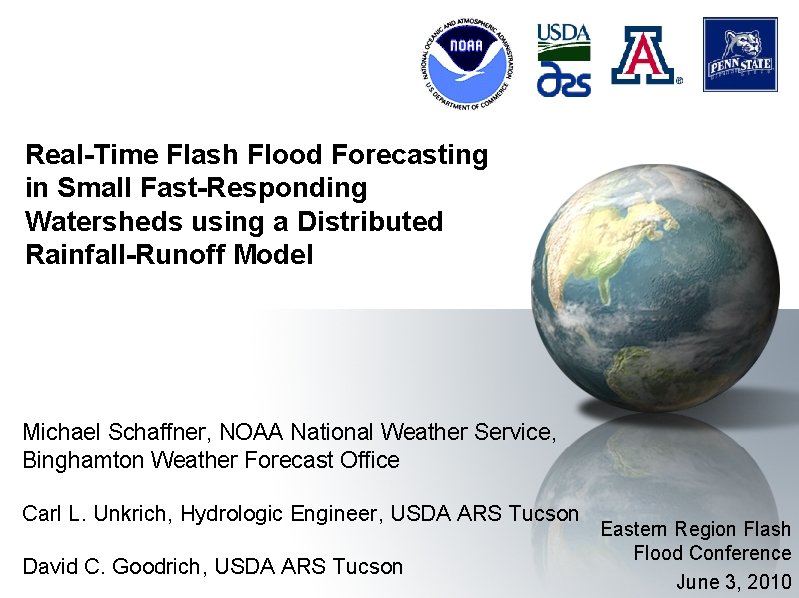Responding To A Flash Flood Emergency: Essential Steps

Table of Contents
Before the Flash Flood: Preparation is Key
Proactive planning is your best defense against the destructive power of a flash flood. Taking steps before a flash flood warning is issued can significantly reduce risk and improve your chances of a safe outcome.
Develop a Family Communication Plan
Establishing a clear communication strategy is vital in the chaos of a flash flood. Knowing how to contact family members and where to meet if separated is crucial.
- Designate an out-of-state contact person: This person acts as a central point of contact for all family members to check in with, ensuring everyone's safety is accounted for.
- Create a family communication app group: Utilize apps like WhatsApp, Messenger, or similar to maintain quick and efficient communication during an emergency. This is particularly useful if phone lines are down.
- Identify safe evacuation routes: Pre-plan multiple escape routes from your home and workplace, considering higher ground and alternative pathways to avoid flooded areas. Familiarize yourselves with these routes to ensure a quick and effective evacuation.
Create a Go-Bag
A well-stocked emergency kit, or "go-bag," is essential for any flash flood emergency. This kit should contain supplies you can grab quickly and take with you if you need to evacuate.
- Water: At least one gallon of water per person per day for several days.
- Non-perishable food: Easy-to-prepare, non-perishable food items like canned goods, energy bars, and dried fruits.
- Flashlight and extra batteries: Essential for navigating in the dark or during a power outage.
- First-aid kit: Include essential bandages, antiseptic wipes, pain relievers, and any necessary prescription medications.
- Medications: Pack all necessary prescription medications, ensuring they are clearly labeled and easily accessible.
- Important documents: Store important documents such as insurance information, identification, and medical records in a waterproof bag.
Identify Flood-Prone Areas and Evacuation Routes
Understanding your risk level is paramount. Knowing which areas are prone to flooding and having pre-planned evacuation routes is essential for swift action when a flash flood warning is issued.
- Familiarize yourself with local flood maps and warnings: Your local government website likely provides detailed flood maps indicating areas at high risk. Sign up for emergency alerts and notifications.
- Identify higher ground locations for potential evacuation: Know where the nearest higher ground locations are near your home and work. This could be a school, community center, or elevated area.
- Determine multiple escape routes from your home and workplace: Don't rely on just one route. Plan multiple escape routes to accommodate unexpected road closures or flooding.
During the Flash Flood: Immediate Actions
When a flash flood warning is issued, swift and decisive action is crucial. Your primary focus should be on ensuring your safety and the safety of your family.
Seek Higher Ground Immediately
Your immediate priority is to get to higher ground. Avoid floodwaters at all costs.
- Do not attempt to drive through flooded areas: Even a few inches of fast-moving water can sweep a car away. Turn around, don't drown.
- Avoid walking or standing in floodwaters: Floodwaters are often contaminated with sewage, chemicals, and debris, posing serious health risks. Electrical hazards from downed power lines are also a significant threat.
- Stay away from downed power lines: Downed power lines represent a severe electrocution hazard. Keep a safe distance and report them to emergency services immediately.
Stay Informed
Stay updated on the flash flood's progress and follow instructions from authorities.
- Tune into local news channels or weather radio: These sources provide crucial updates and instructions from emergency services.
- Follow instructions from local authorities: Obey evacuation orders and heed all instructions from emergency responders.
- Use weather apps: Utilize weather apps on your smartphone to monitor the flash flood's movement and intensity.
Secure Your Property
If it is safe to do so, take steps to protect your property from further damage.
- Move valuables to higher levels: Move furniture, electronics, and other valuable items to upper floors or higher ground.
- Bring outdoor furniture and loose items inside: Secure any loose objects that could be swept away by floodwaters.
- Turn off utilities if instructed by authorities: If instructed, turn off gas, electricity, and water to prevent further damage or hazards.
After the Flash Flood: Recovery and Safety
Following a flash flood, safety and recovery efforts are paramount.
Check for Injuries and Seek Medical Attention
Assess any injuries sustained during the flash flood and seek immediate medical attention if necessary.
- Be aware of potential health risks associated with floodwater contamination: Floodwaters can carry various diseases and contaminants. Seek medical help if you have been exposed.
- Contact emergency services if necessary: Don't hesitate to call emergency services for any injuries or if you require assistance.
- Stay aware of the risk of after-flood hazards: Be cautious of downed power lines, structural damage, and unstable debris.
Contact Your Insurance Company
Report any damages to your home and property to your insurance provider as soon as possible.
- Take photos or videos to document the damage: Thorough documentation is crucial for your insurance claim.
- Keep records of all communication with your insurance company: Maintain detailed records of all calls, emails, and correspondence.
- Understand your insurance policy coverage concerning flood damage: Review your policy to understand your coverage and any necessary steps for filing a claim.
Avoid Contaminated Floodwaters
Floodwaters are extremely hazardous and should be avoided at all costs.
- Wear protective gear (boots, gloves) if necessary to clean up: If you must clean up, wear appropriate protective gear to minimize exposure to contaminants.
- Report any sewage leaks or spills to the local authorities: Report any potential health hazards to the relevant authorities.
- Be cautious when cleaning up debris: Be mindful of potential hazards such as broken glass, sharp objects, and unstable structures.
Conclusion
Responding to a flash flood emergency requires preparedness, quick thinking, and a strong understanding of safety procedures. By following these steps and creating a comprehensive flash flood emergency plan, you can significantly reduce the risks associated with flash floods and protect yourself and your family. Remember, being prepared for a flash flood emergency is crucial for your safety. Don't wait for disaster to strike – prepare your flash flood emergency plan today!

Featured Posts
-
 Tzahrat Hashdt Fy Tl Abyb Llmtalbt Balifraj En Alasra
May 26, 2025
Tzahrat Hashdt Fy Tl Abyb Llmtalbt Balifraj En Alasra
May 26, 2025 -
 Naomi Campbell Met Gala Ban 2025 Feud With Anna Wintour
May 26, 2025
Naomi Campbell Met Gala Ban 2025 Feud With Anna Wintour
May 26, 2025 -
 Concours Journalisme Medias Francophones Victoire D Hugo De Waha
May 26, 2025
Concours Journalisme Medias Francophones Victoire D Hugo De Waha
May 26, 2025 -
 Anchor Brewing Company Shuts Down A Legacy Concludes After 127 Years
May 26, 2025
Anchor Brewing Company Shuts Down A Legacy Concludes After 127 Years
May 26, 2025 -
 Moto Gp Inggris 2025 Jadwal Race Live Streaming Trans7 Spotv Dan Info Klasemen
May 26, 2025
Moto Gp Inggris 2025 Jadwal Race Live Streaming Trans7 Spotv Dan Info Klasemen
May 26, 2025
Latest Posts
-
 Euro Millions Live Record E245m Jackpot Friday Draw
May 28, 2025
Euro Millions Live Record E245m Jackpot Friday Draw
May 28, 2025 -
 Follow The E245m Euro Millions Jackpot Draw Live This Friday
May 28, 2025
Follow The E245m Euro Millions Jackpot Draw Live This Friday
May 28, 2025 -
 Fridays Euro Millions Draw E245 Million Jackpot Live Updates
May 28, 2025
Fridays Euro Millions Draw E245 Million Jackpot Live Updates
May 28, 2025 -
 Euro Millions Friday Draw Follow The E245m Jackpot Live
May 28, 2025
Euro Millions Friday Draw Follow The E245m Jackpot Live
May 28, 2025 -
 Live Euro Millions Draw E245 Million Jackpot Up For Grabs This Friday
May 28, 2025
Live Euro Millions Draw E245 Million Jackpot Up For Grabs This Friday
May 28, 2025
